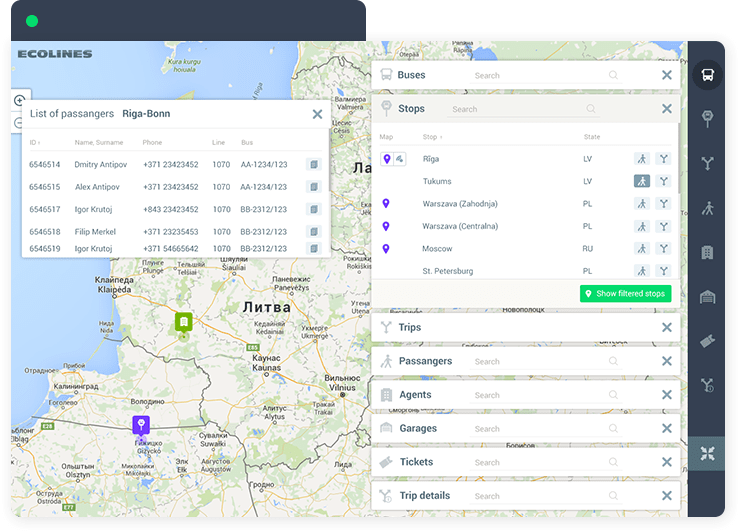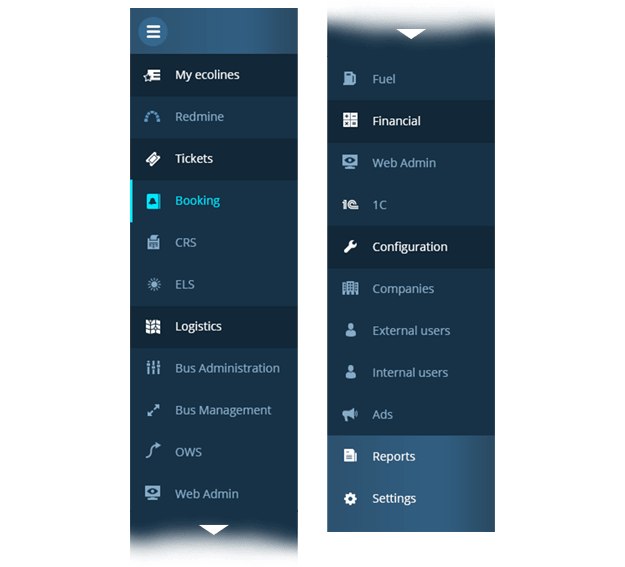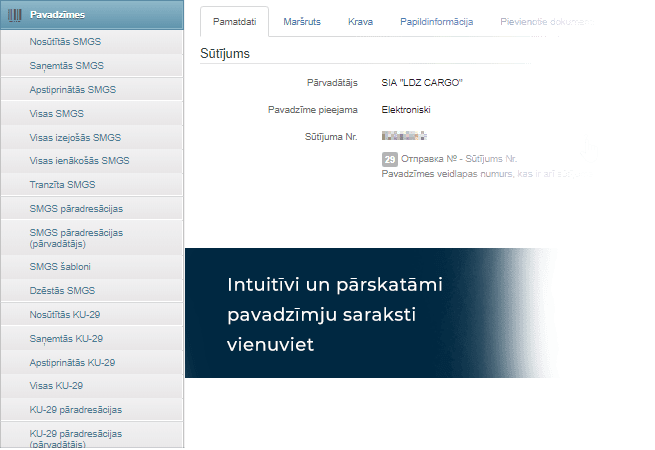In an increasingly internet-dependent, consumer-centric, and post-pandemic world, achieving optimal operational efficiency is vital to the long-term success of your transport and logistics business.
This objective is attainable when you digitize all business processes and adopt a unified control system to manage every available business resource.
However, doubts can manifest after you begin developing the most ideal digitization strategy for your business. Furthermore, confusion can keep you from choosing the right unified control platform for your enterprise.
In this context, we’ll aim to answer whether your transport and logistics company needs digitization and a unified control system. Read on to find insightful, relevant, and case-specific answers to this question.
Definition of Digitization and Unified Control Systems
Digitization, or digitalization, refers to a transition from hands-on methods of implementing business processes to their digital equivalents. For example, you can use a barcode reader to list items in a shipment instead of doing so by hand.
In this context, digitization is essentially the process of integrating digital technologies into everyday business processes. Note that technological solutions and alternatives exist for every aspect of transport and logistics, including fleet management, customer relations, sales and marketing, supply chain logistics, employee payroll, etc.
On the other hand, a unified control system is typically an open-source web-based platform that allows you to manage multiple business processes from one user interface. For example, a single user interface in an ERP (Enterprise Resource Planning) app allows you to access, retrieve, and modify information on fleet management, marketing, accounting, human resources, etc.
For instance, 52% of all companies with revenues exceeding $1b have completed digital transformation. In essence, these enterprises have managed to digitize business operations and then integrated them into a unified control system.
Let’s elaborate on the relationship between business process digitization and unified control systems in the next section.
Dual-Component Answers to Transport Logistics Impediments
From the perspective of a business owner, or a CPO in transport and logistics, we help you evaluate the necessity of digitization and unified resource control in your business via a two-component approach. Our dual-component answers feature.
1. A Relatable Context
We begin with an encompassing view of each challenge, problem, obstacle, or issue that currently affects transport and logistics providers.
2. Digitization - Unified Control Solution
Next, we explore how the combination of digitization and a unified control system can enable you to resolve the impediment described.
In the subsequent section, we highlight 8 key benefits that a digitization-unified control system combo can offer you. Our ultimate goal is to let you pick the most applicable answer.
Major Obstacles in Transportation Logistics
Transportation and logistics companies from across the globe all face a mix of new and recurring hindrances to long-term success in this sector. Ideal industry-specific examples of these common challenges include:
1. Increasing Competition
Context
More and more people now shop online for products and have them shipped to their doorstep from anywhere on the planet. An inevitable outcome is that newer, lesser-known and locale-specific providers now face unfair competition from established transport and logistics operators.
Forced to offer delivery services at bare-minimum prices to incentivise customers, local providers are becoming financially vulnerable and prone to bankruptcy. Furthermore, operating at bare-minimum levels to remain profitable inadvertently biases customers toward more capable established operators.
Solution
In essence, your marketing digitization approach features an e-commerce website, product/service-specific blog, multiple diverse social media accounts, and a corporate email platform. The next step entails optimizing your online visibility through the use of SEO-centric content, i.e., the posts, photos, videos, and other media you upload online.
Reaching this stage in marketing digitization efforts requires you to obtain a unified control open-source application to oversee your cross-platform online marketing channels. Such a system allows you to automate cross-platform social media posting, multimedia uploads, and email correspondence.
Note that optimizing your digitized marketing approach on online platforms grants you a boundless avenue for attracting new customers to your business. In addition to gaining locale-specific market dominance, you can also realize international shipping through mutual partnerships with other carriers.
Ultimately, digitization and a unified control system can allow your transport and logistics business to effectively cope with competitors.
2. Supply Chain Visibility
Context
Customers have become more aware of their right to quality and are turning to web-based apps that offer real-time supply chain tracking. This tracking platform allows consumers to actively monitor the product's journey from the origin, through intermediate transit points, to their final destination.
As a result, customers now exhibit a growing preference for transport and logistics companies that offer real-time supply chain tracking for long-distance shipments. This consumer bias is particularly evident in global product shipments. Furthermore, small-and-medium transport logistics firms are losing out on the higher margins offered by long-distance shipments.
Solution
Availing supply chain tracking in your transportation and logistic services requires that you partner with a third-party satellite-tracking service provider. The provider begins by installing geolocation sensors in concealed and secure locations on every vehicle in your fleet.
Next, the vehicle tracking company typically issues you with a brand-specific web-based open-source app that displays the real-time map coordinates of each vehicle in your fleet. The geolocation tracking app retrieves the necessary data from the provider’s servers over the web.
Consequently, your drivers, members of staff, regulatory officials, and customers can easily determine the progress of your shipments at any time of day via your geolocation app. Furthermore, integrating the tracking app onto an open-source unified control ERP(Enterprise Resource Planning) platform allows you to optimize your supply-distribution chains.
3. Stringent Regulatory Restrictions
Context
During the climax of the covid-19 pandemic, mandatory travel restrictions led to a 10% drop in the global capacity of the transport and logistics industry. Unable to ship goods, operators in this sector kept customers waiting for months.
While these regulations are no longer enforced, new restrictions on the hiring and responsibility of drivers have made it difficult for operators to realize the necessary compliance.
Furthermore, the ongoing drive towards zero emissions has resulted in tougher emissions restrictions for the transport logistics industry. Consequently, logistics and transport companies have to comply with tougher emissions directives.
Notably, regulatory compliance is typically harder for newer startups than older established carriers. This is because the associated monetary and time costs have a greater financial and operational impact on small-and-medium transport logistics providers.
Solution
Digitizing fleet management in your business can help you significantly lower the financial and operational costs of regulatory compliance. For example, you can integrate multiple function-specific sensors into individual fleet vehicles to actively monitor and record an array of compliance-relevant information.
Alongside geolocation coordinates, other fleet management information you can automatically collect via purpose-specific sensors includes vehicle emissions, cruising speed, driver concentration, inter-transit rest stop durations, fuel usage and so forth. After installing various function-specific sensors in your fleet, you then require a unified control system to manage all compliance-relevant data.
In this regard, your sensor technology provider typically offers you a dedicated web-based unified control open-source application. This unified fleet monitoring system ensures you can easily and expediently avail the necessary compliance data and achieve timely low-cost compliance.
4. High Operational Costs
Context
Fleet management is the biggest contributor to the operational costs of your logistics and transport business. The array of associated expenses arising from this critical aspect of your business typically includes driver payroll, fleet maintenance and repair, fleet compliance, vehicle replacement, fuel costs, and more.
Coupled with high competition, decreasing customer base, and costly regulatory compliance, high operational costs mark the end of struggling transport and logistics companies. While larger operators can weather damning fleet-related costs, their continued survival typically entails considerable workforce reduction, i.e., job cuts.
Solution
Concerning fleet-related costs, the integration of sensors as discussed in the preceding section can allow you significantly reduce vehicle-specific costs. Using an open-source unified control system, you can then optimize service routes based on distance, intermediate transit points, fuel usage, major urban centers, distributor locations, etc.
Consequently, route optimization allows you to achieve two cost-averting outcomes. First, you have fewer vehicles on the road translating to reduced vehicle-specific expenses. Second, you employ fewer drivers to carry out the necessary deliveries translating to a lower driver payroll cost.
It is important to note that route optimization does not necessarily entail reducing your existing customer base. Furthermore, ongoing integration of machine learning onto unified control systems grants you AI-enhanced fleet management apps with automatic route optimization capability.
Benefits of Digitization and Unified Control to Transport and Logistics
While the list above is not exhaustive, the four case-specific scenarios discussed clearly show that digitization and unified control systems offer significant benefits. Notable advantages include:
- Operational cost reduction
- Realization of supply chain visibility
- New avenues for customer acquisition
- Route optimization for shipments
- New avenues for service delivery
- Easier regulatory compliance
- Comprehensive and convenient resource management
- Opportunities for international carrier collaboration
However, you should note that embracing digitization and an open-source unified control system can be a challenge. The most significant obstacle entails changing established workplace culture to favor new digital ways of doing business.
Take Away
Having read this article to the end, it should be evident that digitizing your transport and logistics company under a unified control system grants you multiple significant benefits. These benefits justify and exceed all resource and monetary implications. Feel free to reach out for more in-depth knowledge on digitization and open-source unified control systems, in addition to how we can take your business there.
We have extensive experience in the digitalization of the industry. We know the most delicate details that affect the achievement of business goals.
Want to know more? Contact us:




